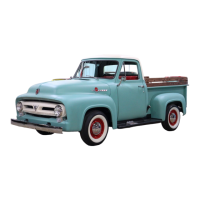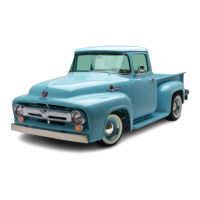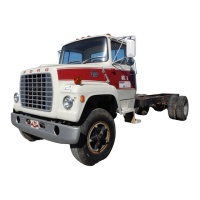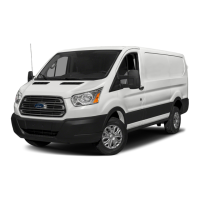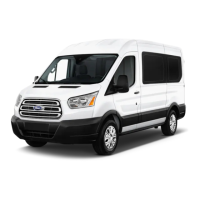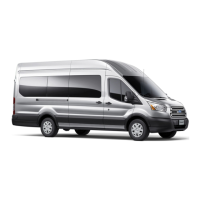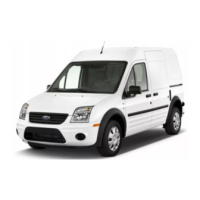11-01-3
General Wheel
and
Tire Service
11-01-3
Make certain the rim ring is seated to
full depth of the groove, fits tightly all
around, and is securely locked.
Stand away from the valve stem as far
as possible while inflating tires. Avoid a
position where the face or body is
immediately over the work being done on
any tire in which there is pressure.
With certain types of wheels,
however, it is necessary to seat the rings
while the tire is being inflated. In either
case before inflating study the next step.
Attach a portable safety device, made
especially for the purpose, to the
assembly. This portable device should be
used with all types of wheels and rims.
F1855-A
FIG.
8
Inflation Details
If the assembly is not of the type
which requires inflation to seat the rings,
a Safety Cage should be used, although
the portable device is the best (Fig. 8).
Use only accurate, tested gauges to
insure proper air pressure. Check all
gauges regularly with a master gauge.
Play it SAFE. Set a good example for
others who work with you. Follow the
above suggestions completely. If you are
ever tempted to take a short cut because
you are in a hurry, that is the time that
you could get hurt.
Finally, always remember, a jack is
provided for wheel and tire maintenance
only. Never run the engine when the
vehicle is supported by a jack.
ADJUSTMENTS
WHEEL BALANCING
See the instructions provided with the
Rotunda Wheel Balancer.
Make certain that the brakes are not
dragging and wheel bearings are properly
adjusted before attempting to spin the
wheels. On vehicles equipped with disc
brakes, push the brake shoes into the
caliper to free the rotor.
FRONT WHEEL BEARING
MAINTENANCE
Wheel bearings are adjustable to
correct for bearing and spindle shoulder
wear. Satisfactory operation and long life
of bearings depend on proper adjustment
and correct lubrication. If bearings are
adjusted too tightly, they will overheat
and wear rapidly. An adjustment that is
excessively loose will cause pounding and
contribute to uneven tire wear, steering
difficulties and inefficient brakes. The
bearing adjustment should be checked at
regular inspection intervals.
CLEANING
AND
INSPECTION
WHEELS
Wheel stud nuts should be inspected
and tightened twice within the first 500
miles of operation. After the first 1000
miles of operation, they should again be
inspected and tightened. Loose wheel
stud nuts may cause shimmy and
vibration. Elongated stud holes in the
wheels may also result from the loose
stud nuts.
Keep the wheels and hubs clean.
Stones or lumps of mud wedged between
the wheel and drum will unbalance a
wheel and tire.
Check for damage that would affect
the runout of the wheels. Wobble or
shimmy caused by a damaged wheel will
eventually damage the wheel bearings
and cause uneven tire wear. Inspect the
wheel
rims
for dents that could permit air
to leak from the tires.
TIRES
The tires should be checked
frequently to be sure that the air
pressures agree with those specified for
the tires and vehicle model. Inspect the
tire tread, and remove all stones, nails,
glass or other objects that may be wedged
in the tread. Check for holes or cuts that
may permit air leakage from the tire, and
make the necessary repairs.
Inspect the tire side walls for cuts,
bruises, and other damage. If internal
damage is suspected, demount the tire
from the wheel for further inspection,
repair or replacement.
Check the tire valve for air leaks, and
replace the valve if necessary. Replace
any missing valve caps.
On F-100, -250, -350, Econoline and
Bronco models, it is important that all
wheels be balanced. Fig. 9 describes
common tire wear conditions.
FRONT WHEEL BEARINGS
Wheel bearings are adjustable, to
correct for bearing and shoulder wear of
the spindle. Satisfactory operation and
long life of bearings depend on proper
adjustment and correct lubrication. If
bearings are adjusted too tightly, they
will overheat and wear rapidly. An
adjustment that is excessively loose will
cause pounding and contribute to uneven
tire wear, steering difficulties and
inefficient brakes. The bearing
adjustment should be checked at regular
inspection intervals.
Front hub assemblies and bearings
should be cleaned, inspected and
lubricated whenever the hub assemblies
are removed or at the mileage/time
periods indicated in the maintenance
schedule.
New hub assembly grease seals should
be installed when the hub is removed. A
damaged or worn seal may permit
bearing lubricant to reach the brake
linings, resulting in faulty brake
operation and necessitating premature
replacement of linings.
Bearing adjustment is described in
Part 11-10 for front wheels. Part 11-12
covers front drive bearing adjustment.
Parts 11-11 and 11-14 cover rear wheel
bearing adjustments.

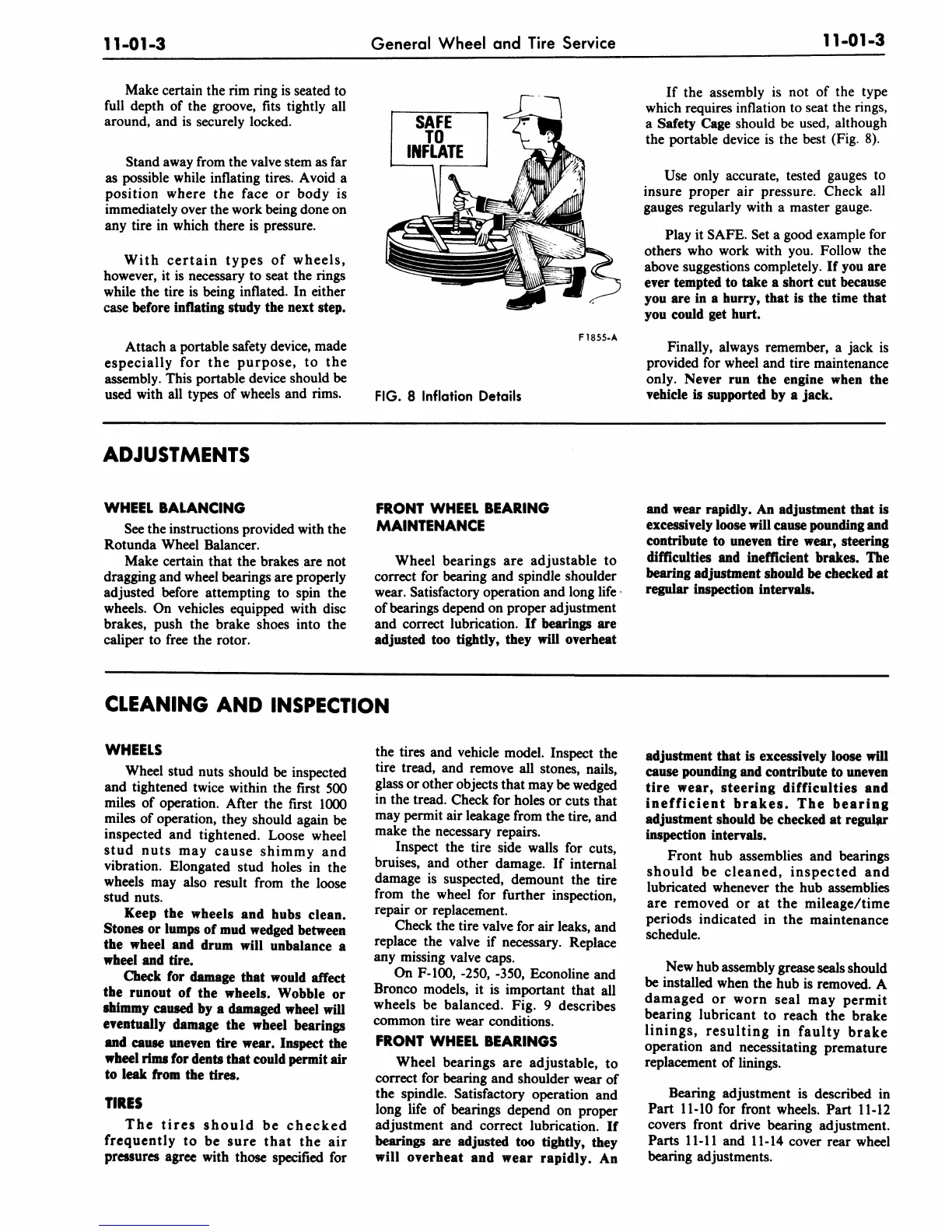